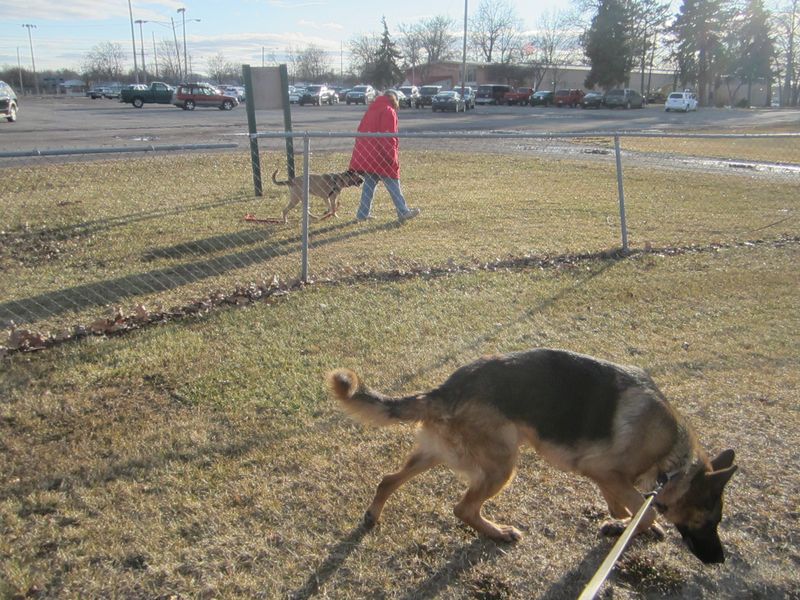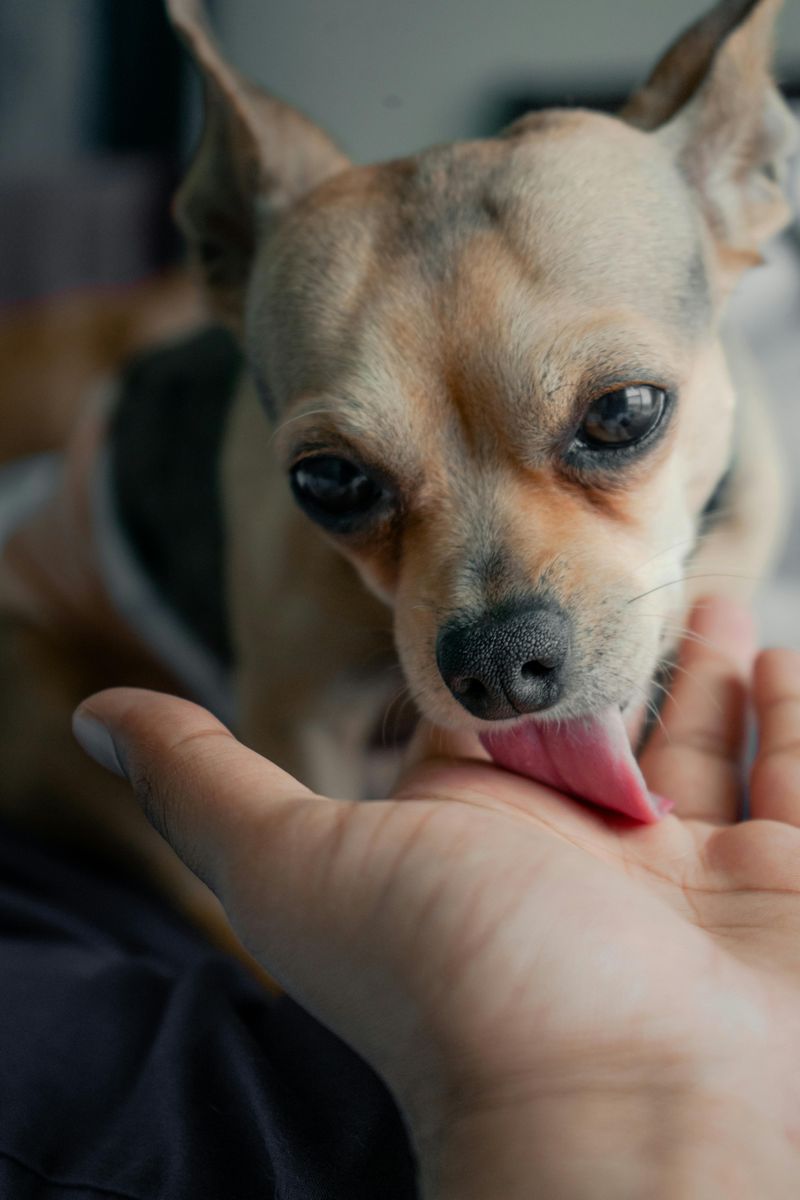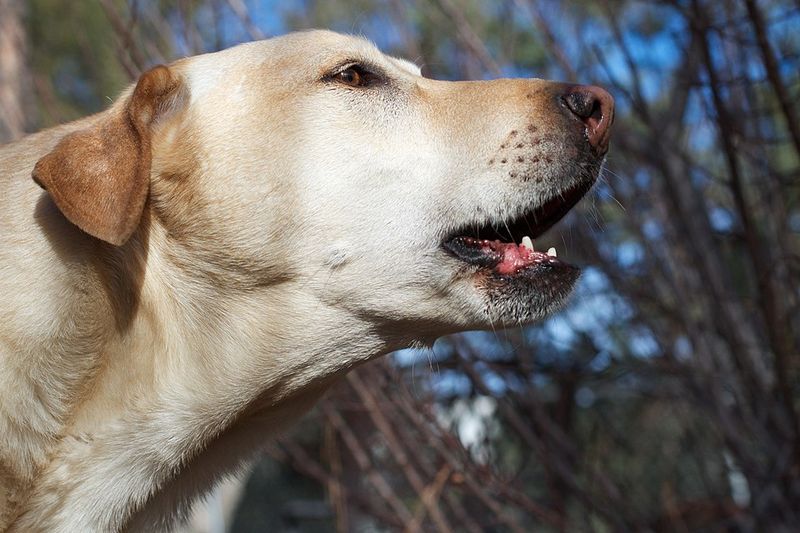Understanding your dog’s behavior can strengthen your bond and improve communication. These common actions, from tail wagging to chewing furniture, often convey specific moods or needs. Let’s explore what goes on in your canine companion’s mind.
Tail Wagging
A wagging tail is not just a sign of happiness. The speed and direction of the wag can reveal much about a dog’s feelings. A slow, hesitant wag may indicate insecurity or cautiousness.
In contrast, a fast, wide wag often means excitement or joy. Position also plays a role; a tail held high can signify confidence, while a low tail might express submission.
Understanding these nuances can help you better interpret your dog’s emotions and respond appropriately, enhancing your relationship.
Ears Pulled Back
When a dog’s ears are pulled back, it often suggests fear or submission. If accompanied by a lowered body posture, the dog might feel threatened or uncomfortable.
This behavior can also indicate a desire to appease, especially in the presence of a dominant dog or person. Ears slightly back yet relaxed may show friendliness.
Observing other body language cues, like tail position and eye contact, can provide a more complete picture of what your furry friend is trying to communicate.
Tilting the Head
The adorable head tilt can melt any heart, but it’s more than just a cute gesture. This behavior suggests curiosity or focus, often occurring when a dog tries to understand a new sound.
Dogs may also tilt their heads to better see or hear you, as it helps them adjust their ear positioning. It’s a way of engaging with their environment, showing attentiveness.
This charming action strengthens human-dog communication, making it easier for them to comprehend our language and emotions.
Licking
Licking can be a sign of affection or a way for dogs to bond with their humans. It releases pleasurable endorphins, promoting a sense of comfort and security.
Conversely, excessive licking might indicate anxiety or stress, especially if directed at themselves. Observing the context is key in determining the underlying reason.
From grooming to comfort, licking is a multifaceted behavior that can convey a wide range of emotions and needs, reflecting a dog’s complex social nature.
Digging
Digging is often rooted in a dog’s ancestral instinct to create a comfortable resting place or to hide treasured items. It can also be a way to escape boredom or expend energy.
Certain breeds, especially those bred for hunting, may have a stronger digging drive. Additionally, digging can help cool a dog down on a hot day.
Understanding why your dog digs can help address the behavior, whether by providing more exercise or altering the environment to suit their natural inclinations.
Circling Before Lying Down
The act of circling before lying down is an ancient instinct, ingrained from when dogs lived in the wild. It served as a way to flatten grass or snow to create a secure sleeping area.
This behavior persists in domesticated dogs, offering comfort and a sense of safety. While it might seem quirky, circling is a natural, harmless action.
If excessive, it could indicate a medical concern, but generally, it’s a charming glimpse into a dog’s ancestral past, connecting them to their wild roots.
Barking
Barking is a dog’s versatile communication tool, with variations in pitch and frequency conveying different messages. A high-pitched bark often signals excitement or a friendly greeting.
Conversely, a low, growling bark can denote warning or protection. Rapid, continuous barking might indicate alertness or anxiety.
Decoding these bark patterns helps owners respond appropriately to their dog’s needs, whether for play, protection, or attention, fostering a deeper understanding of their vocal expressions.
Exposing the Belly
When a dog rolls over to expose its belly, it can be a profound gesture of trust, showing vulnerability. It’s often a request for attention or a soothing belly rub.
In some cases, it might signify submission, especially when accompanied by other submissive cues. This behavior reflects a dog’s desire for companionship and reassurance.
Understanding this gesture fosters a stronger bond, encouraging mutual respect and affection between you and your dog, highlighting their need for connection.
Chewing Furniture
Chewing furniture can be a sign of boredom or anxiety, especially in young dogs. It provides a way to relieve stress or occupy themselves when left alone.
For puppies, it’s a natural part of teething, helping to soothe sore gums. Providing appropriate chew toys can redirect this behavior.
Understanding the underlying cause allows owners to address the issue effectively, ensuring a harmonious living environment while supporting the dog’s physical and emotional needs.
Following the Owner Everywhere
When dogs follow their owners everywhere, it’s a sign of strong attachment and bonding. This behavior reflects their innate pack mentality, seeking security and companionship.
It can also indicate curiosity or a desire to be involved in household activities. While flattering, it may become problematic if associated with separation anxiety.
Promoting independence while maintaining a healthy bond ensures a balanced relationship, allowing your pet to feel secure even when alone.










